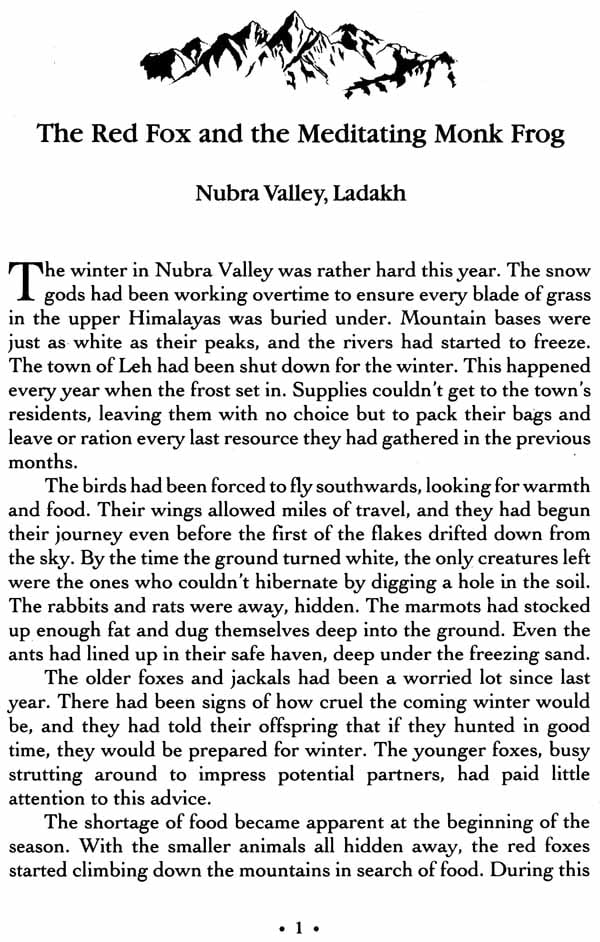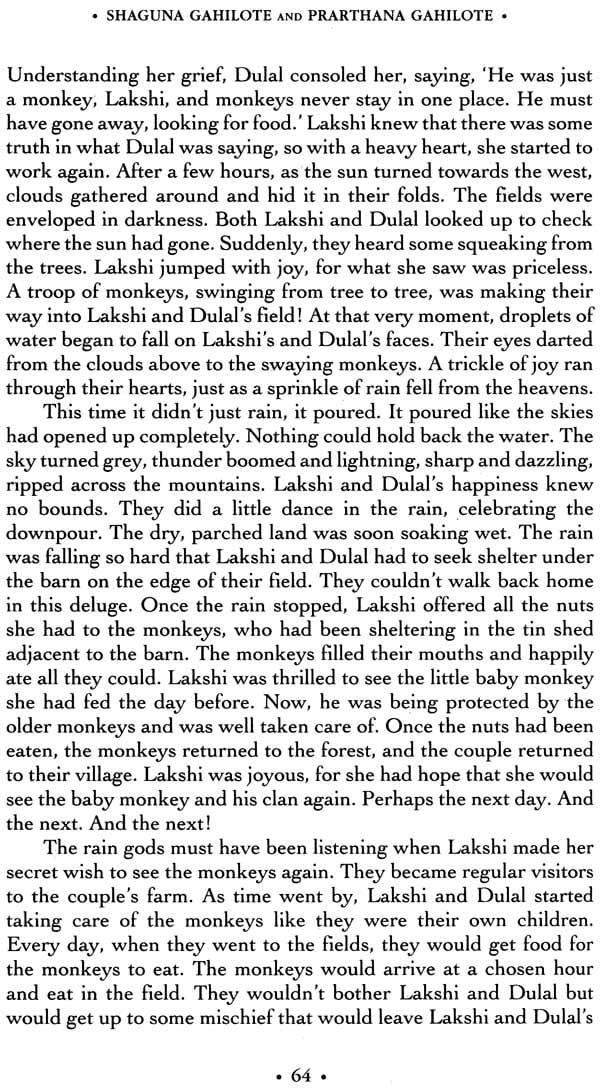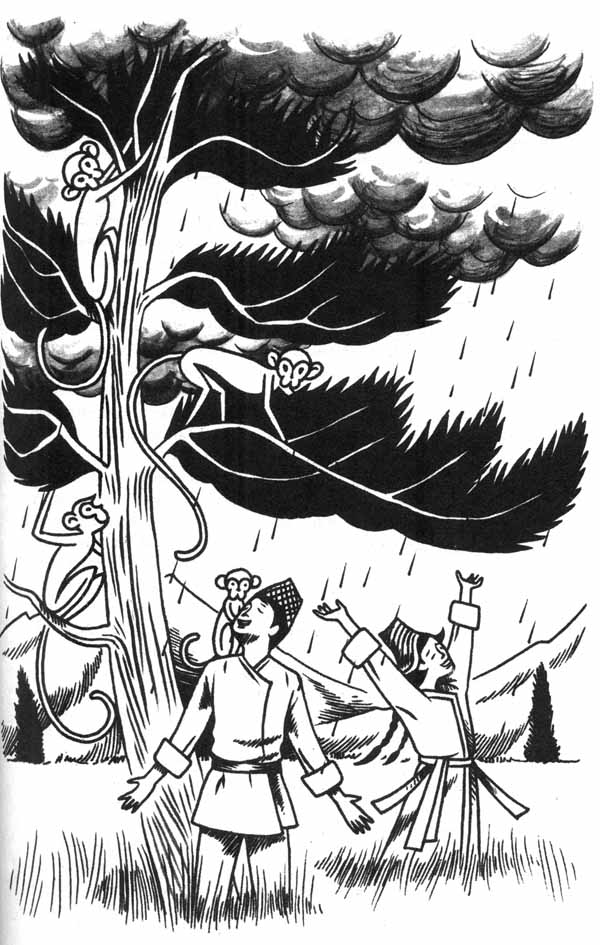
Curious Tales from The Himalayas
Book Specification
| Item Code: | NAO390 |
| Author: | Shaguna Gahilote & Prarthana Gahilote |
| Publisher: | Penguin Books India Pvt. Ltd. |
| Language: | English |
| Edition: | 2017 |
| ISBN: | 9780143428602 |
| Pages: | 116 |
| Cover: | Paperback |
| Other Details | 8.5 inch X 5.5 inch |
| Weight | 100 gm |
Book Description
Shaguna Gahilote is a performance storyteller. She is a maths wizard with a double master’s degree, having studied in both India and the UK, where she was a Commonwealth Scholar. She came back to India to work on conserving rare and dying folk art forms. She has worked as an education, peace and culture specialist and helms Ghummakkad Narain: the Travelling Literature Festival and Kathakar: International Storytellers Festival, now in its eight edition.
Shaguna spends her days writing, drawing cartoons, solving maths problems with her nephew and looking after her pet Labrador, Ginger, as well as her neighbourhood strays. She has trotted around the world on a staple diet of potatoes, eggs and hummus.
Prarthana Gahilote has been a journalist with the national media-spanning print, TV and digital platforms-for two decades, with a stint in the UK as a Chevening Scholar. She is the festival director of Kathakar: International Storytellers Festival.
Prarthana suffers from wanderlust and loves walking the Himalayan forest whenever she can escape Delhi or Mumbai. When not occupied with the alphabet, she is found spinning yarns with family and friends, pampering her nephew, Raghav, and her pet, Ginger. She has an ever-growing collection of books, fountain pens and antiques. She directs short films, documentaries and digital concerts. She also writes poetry in Hindustani as well as lyrics for songs. She can’t live without music or gulab jamuns.
Our sense of human is passed down by various means, one of which is folktales help preserve the popular wisdom that sustains our human society with love and care. This book contains folktales from the Himalayan region, which will, I am sure, allow readers to take pleasure in its rich culture. I commend the author readers to take pleasure in its rich culture. I commend the authors – two sisters – Prarthana and Shaguna Gahilote for their good work.
The stories in this book have been chosen to bring a certain flavour of the Himalaya so the reader, and have been hand-picked from the western, central and eastern Himalaya belt to cover every range. Some of these tales are very popular, others are and a few – one popular – are now lost to the new generation. Some stories here have been reproduced from childhood memories, while others, whose details were lost, had to be researched and many others were found during our travels and treks in the mountains! There is no one tale that can be described as the first version ever told, or one that forms the basis of all other folk tales. As people travelled along the Silk, the Incense and the Spice Routes, they carried with them folklore and folk tales. So a story that one might have heard as a child in a village in India could be a folk tale from England or Russia, because these fables have travelled across the world since ancient times and have been adapted to each country to suit its cultural ethos.
As we researched the stories for this book, we found varied version of the same tale spanning many different regions. We’ve tried to stick to the one we believe is the relevant. For some, missing portions were pieced together from other versions.
Folklorists around the world believe that folk tales prepare children for the future, which is why life’s darkest lessons are told through demons and witches. These supernatural beings in the stories may be manifestations of man’s inhuman emotions. Older tales have evil stepmothers and stepsisters, a reflection of those times, when woman would often die during childbirth, and kids had to grow up to face a cruel world, moulding their own lives as they grew up. Folk tales were woven with so much mystery and magic, always ending in happily ever after, that the lessons were conveyed without being preachy.
And then there is the perennial discussion regarding folk tales having too many graphic and gruesome details. Should we be telling stories of evil parents, uncles and aunts to children, or should we spare them the nasty details, like those in ‘Tejimola’, ‘Lakshi, Dulal and the Monkeys’ and even ‘Hansel and Gretel’? Psychologists explain that children have their own interpretation of these stories and understand them differently from adults. They absorb the essence of a story without getting consumed by the macabre details. This is why tales have to be told without adding ‘So the moral of the story is’ at the end. Of tale, folk tales have been pushed to teach from this restriction. Stories need to be told as stories, free of any labels, so that children can image them as they like.
Stories are constantly being lost; parents heading nuclear families have little time to tell tales to their children, and technology has given kids many other tools to interact and engage with. But stories have a shelf life far longer than fads and trends do. Stories last for generations, reviving themselves around campfires, spitting up flames, hibernating during the winter and blooming again with the sun in spring-spreading like the fragrance of the rhododendrons in the Himalayas for anyone who wishes to drink them in and share!
| Foreword | ix |
| Introduction | xi |
| The Red Fox and the Meditating Monk Frog | 1 |
| The Bowl of Thenthuk | 7 |
| Kaala Paaja | 15 |
| Kali and Ghughuti | 23 |
| Tears of Blood | 31 |
| Kesha Chandra and Gurumapa | 40 |
| Rongnyu and Rongeet | 54 |
| Lakshmi Dulal and the Monkeys | 61 |
| Tejimola | 73 |
| Bumo Sing Sing Yangdonma | 83 |
| The Flying Monks | 93 |
| Acknowledgements | 101 |









